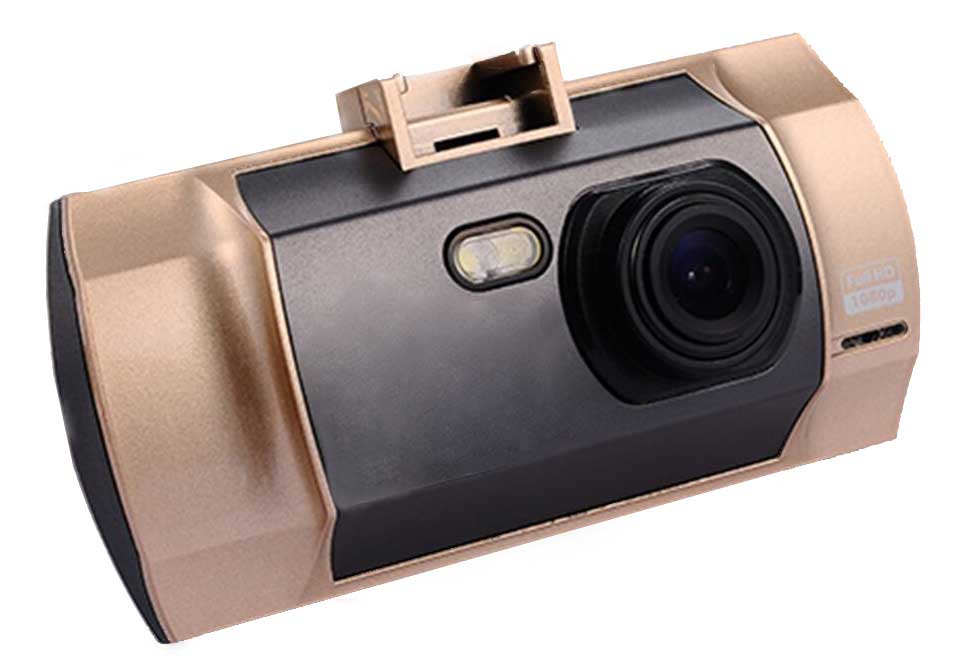
Car dash cam has become a must-have for lot of motorists especially with the growing number of vehicles running on busier roads. With so many different brands, so many varieties and bluffing features, it’s not easy to choose a good car dash cam. Here are some clues to help identity some misleading or even deceptive technical parameters when selecting a car dash cam.
1. Do not believe easily in RESOLUTIONS, but EFFECTIVE PIXELS matters
Most probably many people is more concerned about the pixels or resolution when they come to buy a car dash cam. Yet the fact is that in car dash cam, high resolution and pixel does not imply the clearer image. Because the clarity of the image only relies on the camera sensor size and pixel density. Only the larger sensitive area can result in a larger pixel density, thus turn out the clearer image.
Normally, a car dash cam would choose CMOS size 1/3 inch as of cost effectiveness, which means the effective photo sensitive pixels is about 3.3 million and if you picture it 1080P resolution, this can meet 2 million pixels. But this pixel does not necessarily mean that the image will be clearer, yet it’s fairly ok.
2. Do not trust DEFINITION, you need to check FPS (FRAMES PER SECOND)
Many people solely believe that high resolution and pixel could bring in sharp and crisp image. Yet in fact to ensure the clarity of the picture, you also need to check the refresh rate – the number of frames. In other words, the higher the refresh rate, the more frames taken every second, thus improving picture quality and clarity. Because, for vehicles travelling at high speed, higher the number of frames, images captured more easier to get a clear picture.
3. Do not fully reply on WIDE ANGLE, HORIZONTAL ANGLE is the point
One important tech parameter in a car dash cam is the viewing angle. You may probably have already seen some markings of up to 170 degree viewing angle. This is virtually impossible as from such angle it can be seen on both sides of the rear view mirrors.
Additionally wide angle may be confusing which some businesses claim as camera angle. But we truly need is image angle, i.e. viewing angle after forming the image. The key angle for a car dash cam is the horizontal viewing angle.
4. Do not take NIGHT VISION for granted, but verify WDR EFFECT
Some publicize their products with a powerful night vision feature, and are equipped with infrared night vision light. This is almost useless. Just think, when you drive in a dark night, you can simply rely on a few far-infrared light bulbs for the claimed great night vision capabilities?
If you seriously need night vision capability, then go for WDR function. Wide Dynamic Range (WDR), known for still images as HDR imaging, is intended to provide clear images even under back light circumstances where intensity of illumination can vary excessively, namely when there are both very bright and very dark areas simultaneously in the field of view of the camera. WDR enables the capture and display of both bright and dark areas in the same frame, in a way that there are details in both areas, i.e. bright areas are not saturated, and dark areas are not too dark.
5. Not be obsessed with HIGH CONFIGURATION, but examine the SOFT POWER
For those car dash cams claimed as high-end sports camera quality with Ambarella A7 or A9, the main processor doesn’t guarantee the best performance as it’ll have to match the proper factors which include CMOS sensor, camera, coding and decoding software. Then you’d understand why some high-profile car dash cams perform unsatisfactorily, though at a low cost.
To sum up, the more facts you know more about car dash cam, the less you’d be misled. And you can choose easily the exact features suiting your needs.
